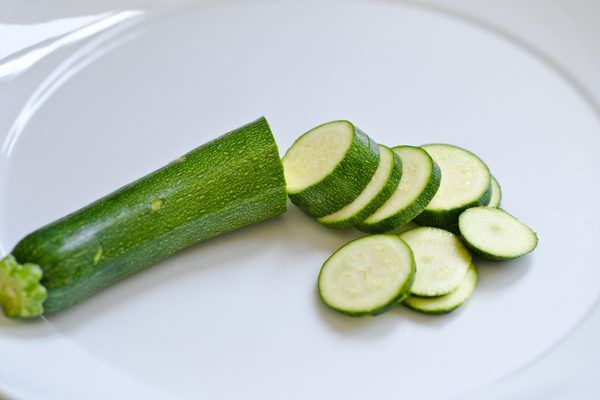Baby weight gain food chart
Best foods for weight gain in babies & toddlers (0 to 3 years)
This post has been updated with a new list of weight gaining recipes at the end of this post for toddlers – above 1 year old. Many readers have been asking for suggestions on best foods for weight gain in babies & toddlers. I have shared the tips that one can follow. If you are a new reader to this blog and have reached here looking for weight gaining foods or recipes for your little heart, please read this food chart for babies above 8 months.
I suggest following the recipes on the post as well for a good weight gain. I would also suggest to read the comments before posting your query here as similar queries may have been answered in the comment section below.
If you are looking for a food chart for baby around 6 months, you can refer this post on solids for 6 months baby.
Best foods for weight gain in babies & toddlers (0 months to 3 years)
1. Breast milk is one of the best foods for babies under 6 months to gain weight. Since mother’s milk is more nutritious than any other foods, it is good to exclusively breastfeed babies for the first 6 months.
If a baby is breast fed, mum needs to eat more nutritious foods to have enough milk supply and to increase the quality of milk.
To increase the milk supply in lactating mothers’ foods like milk, lentils (DAL), garlic, flax seeds (alasi in hindi or avise ginjalu in telugu), chickpeas (chana), almonds, whole grains, methi leaves, methi seeds, dill leaves (sabbasige soppu in kannada), fennel seeds (saunf), cumin (jeera) have been proved to be beneficial. One needs to include these in their diet moderately.
At least 2 protein rich meals and a breakfast should be included in the diet of a lactating mother. For vegetarians lentils / dal is a best protein rich food.
Chickpeas can be enjoyed by mums having babies older than 3 months. If using they need to be soaked overnight, soft cooked with turmeric and other Indian spices to prevent vata dosha.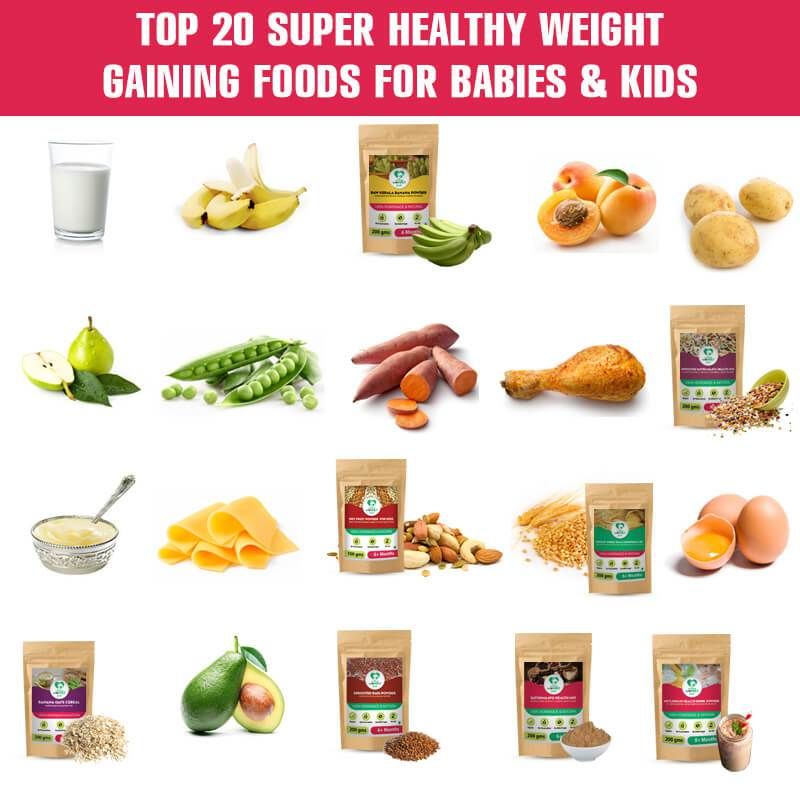
Traditionally gond ke laddu, dry fruits ladoos and copra ladoos were eaten by lactating mothers to improve the quantity and quality of breast milk. Here are some protein rich ladoos which you can try after consulting your elders.
Gond ke laddu
Dry fruits ladoo
Copra ladoo (or dried coconut ladoo)
Here is a simple homemade powder for increasing milk supply in lactating mothers. Dry roast equal quantities of cumin and fennel seeds till they turn aromatic. Cool them and grind to powder.
Mix ½ tsp powder in ½ tsp warm ghee and consume 30 minutes before food 2 to 3 times a day. Desi ghee works best. This can be consumed for 2 weeks, followed by a break for 4 to 5 days and then repeat the cycle.
This also helps to reduce colic in breastfed babies. A small portion of ajwain/ carom seeds can also be included.
2. There is also a wide population of women who are unable to breast fed due to medical or professional reasons, yet their babies tend to grow well in terms of height and weight. For babies who are not breast fed, Formula milk has been proved to be of great help.
For babies who are not breast fed, Formula milk has been proved to be of great help.
If your baby is over 6 months and you intend to stop breastfeeding, then choose a good formula milk with the help of your pediatrician. Formula milk is mostly balanced and has adequate nutrition which may not be available in dairy milk.
Formula milk helps to gain good weight in most babies, but one needs to be patient in trying out what works best for your baby. Many women express that formula milk is not good and hence should choose dairy milk.
Both have their own pros and cons. In the recent years, cows raised in farms are not grass-fed and are mostly on hormones either in their feed or injected to produce more milk. So it may be more unsafe than the formula milk.
A thorough research is conducted before any formula milk is sold in the market. So as a mother, you are the right person to choose between cow’s milk vs formula milk.
For babies above 12 months, fresh dairy milk can be used. Do not use milk that comes in tetra packs for babies and toddlers.
Do not use milk that comes in tetra packs for babies and toddlers.
3. Foods like potato, pumpkin, sweet potato, dal, ghee, ragi, almonds, yogurt, eggs and milk help the baby to gain weight. Please take a pediatricians’ suggestion before you start any of these foods. As always follow a 3 day test rule.
How to make mashed potato for baby ?
Always choose hard potatoes that do not have any sprouts grown over them. Sprouted or soft potatoes are not healthy to use.
Wash and peel off the skin of the potato. Cook potato in excess water either in pressure cooker or a rice cooker steam basket or in a pot. It should be soft cooked.
While it is still hot, take it to a feeding bowl and mash it to soft. Add the potato stock that was left after cooking to make smooth puree. using a small steel glass you can easily mash it.
Add a pinch of ajwain and ghee and serve it warm. The same way you can also make mashed sweet potato for baby. Best time to serve these is for breakfast or lunch.
Best time to serve these is for breakfast or lunch.
It can also be cooked along with rice to make a rice potato khichdi. You can find the recipe of sweet potato here (new post)
How much potato or sweet potato for baby?
7 months baby – 1 tbsp 2 to 3 times a week
8 to 10 months – 2 tbsp. 2 to 3 times a week
10 to 12 months – 3 to 4 tbsp. 2 to 3 times a week
toddlers- use your judgement . Can be served 5 times a week to daily.
Serve potato or sweet potato at least 2 to 3 times a week with little ajwain powder and ghee. Avoid when baby has tummy upset, colic or spit ups.
Moong dal and urad dal help a lot to gain weight in babies & toddlers. Urad dal is a power house of nutrients, high in calcium and protein and also EFA , essential fatty acids that help to develop the brain. So Idli is a very healthy food for babies.
Using urad dal make idli and serve with mild rasam or dal ka pani and ghee. This can be fed daily. You can find the recipe of soft idli here and a rasam recipe for babies here.
This can be fed daily. You can find the recipe of soft idli here and a rasam recipe for babies here.
Include dal preferably moong dal or tuvar dal in lunch or breakfast every day. Do not mix dal with yogurt or milk. Just a simple vegetable dal rice khichdi works great for babies in gaining weight.
If your baby tends to get bored, change the vegetables used in the khichdi to give a different taste. You can find the recipe of dal khichdi here
Ragi porridge also helps to gain weight, it also strengthens the bones, teeth and helps for the overall development. Here is a complete post on how to introduce ragi to babies and how to make sprouted ragi flour for babies.
Yogurt and homemade paneer are also a good choice for babies over 8 months to gain weight. Serve yogurt alone or with brown rice and white rice in equal quantities.
I always used to make one cup curd separately for both my babies since it is not recommended to serve cold yogurt from the refrigerator. Also avoid serving in the evening or night.
Also avoid serving in the evening or night.
how much yogurt/ curd to serve for babies ?
2 tbsp homemade unsweetened yogurt/ curd can be fed to 8 to 10 months baby, 2 to 3 times a week (avoid during winters)
4 tbsp can be fed to a 10 to 12 months baby. 3 to 4 times a week (avoid during winters)
Eggs also help babies to gain weight. Prefer boiled eggs instead of scrambled eggs. There is a loss of nutrition in scrambled eggs especially the protein content.
you can find the recipe of homemade curd here.
How to feed egg to baby ?
Make a hard boiled egg. Remove the yolk and take small portion of it and mash it with a pinch of cumin powder, add very little water and mash the egg to blend it well with water. It should become a smooth paste.
how much egg for 7 months old baby ?
For a 7 months baby – Start feeding a tsp of the above said mashed egg yolk. It can be served 2 times a week.
For 8 months baby – a tbsp and then increase the quantity.
For 10 months baby – by the end of 12 months a baby can eat the entire mashed yolk.
Include banana, papaya, apple, pear and chikoo (sapota). Serve banana at least 4 to 5 times a week. We give the small variety banana to babies. Avoid it when baby has cold and phlegm.
Serve a warm apple sauce or apple oats when the baby has cold and congestion. Banana helps to gain weight and most fruits helps to digest foods better since they contain natural digestive enzymes.
The nutrients from other foods are better absorbed by the body when a good amount of fruits are consumed (the right way).
Follow the rule, of feeding fruit alone without mixing with other foods at least once a day. Strictly do not serve fruits and milk together.
4. Ghee also helps to gain weight – How much ghee to serve for babies and toddlers ?
Start with only few drops a day when you introduce ghee to your baby. Try using organic and grassfed or desi ghee. Desi ghee can be found in ayurvedic stores or can also be bought online.
If you notice symptoms like coughing, itchy eyes or rubbing eyes or rashes stop it. Try with a new brand or try with homemade ghee. If your baby or toddler do not like the flavour of ghee, I suggest making ghee at home.
Just add few curry leaves towards the end when you make ghee at home, it adds a good aroma.
Excess usage of ghee may suppress the baby’s appetite, so use only as needed, a mother is the best judge. I followed the following measures for my babies and no cheese or butter was given to them.
If using butter then reduce the proportionate amount of ghee from the below mentioned quantity.
7 months ½ tsp ghee divided among 2 servings – start with only a few drops of melted ghee
8 months ¾ to 1 tsp ghee divided among 2 servings
10 months 1 to 1 ¼ tsp ghee divided among 3 servings
12 months on wards 1 to 1 ½ tsp ghee divided among 3 servings
Some babies may not digest fats in ghee well especially if formula milk, cheese, or butter are already a part of the diet. You can try with only half of the above quantity.
You can try with only half of the above quantity.
5. Can i use almonds / badam for my baby?
Experts advice not to introduce nuts to babies until 1 year as they may end up with severe allergies. So i would suggest waiting until your baby turns an year old especially if there is an history of allergy in your family.
However i have used almonds from 8 months for both my babies. Those who would like to try may start with almonds since these are the only kind of nuts that are slightly alkaline (apart from chestnuts).
Alkaline foods help us to keep our body healthy and energetic. Always try using soaked almonds. Soaking also increases the alkaline nature and hence digest well.
Soaking for about 5 to 6 hours also helps to peel the skin. They can be ground with little water and then used to cook baby foods like oats, ragi, rice etc.
6. Physical activity
Allow the baby to crawl freely, do not restrict your babies to prams or rocking chairs. Being physically active helps babies feel hungry in time. They are less fussy and eat or drink well.
Being physically active helps babies feel hungry in time. They are less fussy and eat or drink well.
Burping is very important as it helps to relieve the babies from colic and they tend to drink better. Gently Burp before feeding, in between the feeds, Burp after the feed. Keep the baby in upright position for at least 15 minutes after a feed.
Foods for weight gain in toddlers (above 1 year)
Breakfast menu
Pesarattu with ghee
Idli with ghee (1:2 proportion) – use search box for idli recipe
Soft thick dosa with boiled mashed potato
Chick pea / chana soup
chana dosa (with steamed mashed carrots)
moong dal soup
carrot milkshake
oats uttapam (use carrot for topping, follow method 2)
jowar dosa: you can make uttapam with carrot topping. Jowar makes bones strong and helps to gain good weight.
ragi mudde with rasam or any soup.
paneer paratha – no stuffing, good finger food too for snack in the evening
Boiled egg – boiled eggs have more nutrition than scrambled eggs. So try serving boiled egg with mild flavorings like pepper, cumin powder, ajwain and salt.
So try serving boiled egg with mild flavorings like pepper, cumin powder, ajwain and salt.
Suggestions from experienced mothers are welcome and highly appreciated to enhance this page.
Disclaimer: Please check with a pediatrician before you follow any of the tips or foods mentioned in this post.
My Heartfelt Thanks to all the Readers who have been consistently sharing with us their personal experiences with their babies, this has helped many new mothers to understand the baby food patterns and other food related issues.
Wishing a Wonderful Motherhood to all the MUMS
Baby food chart with recipes for 7 months to 1 year Indian baby & toddlers
By Swasthi on August 6, 2022, Comments,
Indian baby food chart along with a list of tried & tested 60 Indian baby food recipes. Thanks to the readers who led me to this post on Indian baby food chart. Before I take you to the details of the food chart and the food recipes, please be informed that this post is based on my experience. I have honestly expressed my views and opinions on easy baby weaning so that it could be helpful to new mothers.
Before I take you to the details of the food chart and the food recipes, please be informed that this post is based on my experience. I have honestly expressed my views and opinions on easy baby weaning so that it could be helpful to new mothers.
Please read the comments below before posting your queries since similar queries may have been answered.
Well, some of my tips might look like old wives tales since they are based on Ayurveda, but I do trust them in growing healthy and happy babies. However I suggest consulting your elders or pediatrician before you follow any new foods or tip that have been mentioned here.
For the past several years, I have been consistently sharing & updating baby recipes especially for a good weight gain. You can find all the latest recipes or ideas on the baby toddler recipes section.
Readers who have been asking for suggestions on foods to gain weight, please check this detailed post on best foods for weight gain in babies & toddlers.
Is this baby food chart suitable to my Baby?
This Indian baby food chart is a generalized one suitable for most babies. However i suggest you to use your judgement whether to include or not, certain ingredients in your babies diet based on your babies allergies, intolerance, appetite, likes and dislikes.
I have tried to link most Indian baby food recipes that I have posted earlier on this blog. Many were written almost 5 years ago and are updated regularly with new tips based on the readers reviews.
This Indian baby food chart was developed by me based on what i fed my 2 kids, whose birth weight was 3.3 kgs and 3.4 kgs. The ideas were basically drawn from the health and baby weaning booklets that were given to us during our visits to the singapore clinics, hospitals and few from clinics in Bangalore.
This chart is also suitable to babies who were preterm born or were underweight. However I suggest mums with such babies to consult a pediatrician if you are skeptical about these foods.
This post will be updated, to include tips and other information. You can leave a comment here if you want to know anything specific which will be answered. Please feel free to share or discuss your experiences, views, problems that you encounter while weaning your babies in the comment section. It could be helpful to other readers, it’s through sharing we can learn.
When to introduce food to baby – 6 months to 1 year
Here is a brief guide on the right time to introduce foods. But how to introduce them can be found in the recipe posts. Example: Oats or oatmeal – I have mentioned clearly how to choose them and the kind you can use and how to prepare it for a baby.
You can find a a detailed baby food chart for 6 months old baby here along with recipes.
This Indian baby food chart and the baby food recipes have been developed for a good weight gain in babies.
Indian baby food chart for babies above 7 months or from 8 months
| Milk – (skip milk if baby wakes up after 8 am, make a milk based breakfast from breakfast section) |
 30 to 8 am 30 to 8 am |
| One of the following: APPLE RICE CEREAL Quick fix breakfast (for 8 to 18 months): |
 15 am 15 am |
| One of the following: Steamed apple (raw apple for babies older than 12 months) |
| Try using whole grains like RAGI OR FINGER MILLET Try one of the following DALIA KHICHDI (vegetable broken wheat food) For a lighter meal, if the baby has colic mashed rice with dal ka paani with a pinch of ajwain(strained dal soup) |
 30 to 3 pm 30 to 3 pm |
| Fruits or steam cooked mashed veggies |
| One of the following: Large serving of Milk |
| Please Note: Feeding late can cause indigestion and the infant may not sleep due to colic. Avoid feeding heavy foods. Dinner should always be light, nutritious, mostly vegetable based. For babies from 10 to 12 months prefer light foods from breakfast section. Avoid egg & nuts. Babies above 12 months : Any foods mentioned in the breakfast and lunch can also be served for dinner. Other options mashed rice with dal ka paani (strained dal soup) |
| Large serving of Milk. Make sure there is a gap of at least 1 hour 30 mins in between the completion of dinner and milk. For babies above 12 months: If the baby is still hungry after the milk, can feed some light crackers. |
Related post: how to make ragi flour for babies or toddlers’ porridge
Tips to increase the appetite in babies
1. Try to serve fruits 1 ½ to 2 hours before a meal. They tend to make the infant feel hungry naturally. Do not serve fruit with a meal.
2. Do not mix fruits with dairy especially milk. It leads to indigestion.
It leads to indigestion.
3. Babies need exercise, let them play and crawl or run around. Don’t confine them to a small area. For toddlers / babies who can walk, a small walk in the neighborhood before a meal can make them hungry.
General Tips:
1. If you have a very fussy baby, avoid milk in the early morning and serve milk based breakfast mentioned in the table.
2. Serving bread or any other baked stuff to babies, leads to colic or bloating due to the ingredients like baking soda, powder, yeast etc.
3. Limit crackers or biscuits to only once a day, avoiding is however better.
About Swasthi
I’m Swasthi Shreekanth, the recipe developer, food photographer & food writer behind Swasthi’s Recipes. My aim is to help you cook great Indian food with my time-tested recipes. After 2 decades of experience in practical Indian cooking I started this blog to help people cook better & more often at home. Whether you are a novice or an experienced cook I am sure Swasthi’s Recipes will assist you to enhance your cooking skills.
Whether you are a novice or an experienced cook I am sure Swasthi’s Recipes will assist you to enhance your cooking skills.
Follow Swasthi’s Recipes
Sign up to receive awesome Swasthi’s Recipes in your inbox *
Popular Recipes
Featured Recipes
Table of height and weight of children under one year old, how much weight a newborn gains
For helpless babies, weight and height are vital signs, especially before the age of 12 months. It is then that the foundations for the development of the body are laid, health for many years to come, and any deviation +/- is a cause for concern. To independently control the situation, monitor how much the newborn is gaining (a table with body weight gain is given below), accurate medical scales will help - profile ones, which take into account all the nuances of the child's physiology from several weeks and above. nine0003
nine0003
Normal baby weight at birth
Regardless of how much weight a newborn gains, there is a standard for the body weight of children at birth. An indicator from 2 kg 500 g to 3 kg 700 g is considered optimal. More or less, as the newborn weight table reflects, is recognized as a pathologically dangerous risk. Therefore, the baby falls into the circle of close attention of neonatologists. All this can be determined by high-precision scales for newborns, which our store offers to buy. nine0003
Table of newborn weight gain by months
The data of children under one year old are monitored monthly, taking into account the specified interval. In babies from one to two years old, weight gain is monitored every 8 weeks, which is considered a reference indicator. How much mass a newborn should gain can be seen below.
| Age (months) nine0024 | Optimal weight gain for boys (g, min/ max) | Optimal weight gain for girls (g, min/ max) |
| 1st | 500 . | nine0002 400 ... 900 |
| 2nd | 400 ... 1500 | 400 ... 1300 |
| 3rd | 600 ... 1300 | 500 ... 1200 |
| 4th | 400 ... 1300 | 500 ... 1100 |
| 5th | 400 ... 1200 | 300 ... 1000 | nine0045
| 6th | 400 ... 1000 | 300 ... 1000 |
| 7th | 200 ... 1000 | 200 ... 800 |
| nine0002 8th | 200 ... 800 | 200 ... 800 |
| 9th | 200 ... 800 | 100 ... 600 |
| 10th nine0024 | 100 . | 100 ... 500 |
| 11th | 100 ... 500 | 100 ... 500 |
| 12th | nine0002 100 ... 500 | 100 ... 500 |
Newborn weight norm
The table of newborn weight gain will allow you to compare the results and draw rational conclusions. It reflects indicators such as the minimum and maximum increases for each month in accordance with the sex of the child (boy / girl). Given these data, you can get the final body weight of the baby for 4 weeks, which should be taken as a key guideline. nine0003
| Age (months) | Optimal weight for boys (g, min/ max) | Optimal weight for girls (g, min/ max) |
| 1st nine0024 | 3900 . | 3600 ... 4800 |
| 2nd | 4900 ... 6300 | 4500 ... 5800 |
| 3rd | nine0019 5200 ... 6600 | |
| 4th | 6200 ... 7800 | 5700 ... 7300 |
| 5th | nine0002 6700 ... 8400 | 6100 ... 7800 |
| 6th | 7100 ... 8800 | 6500 ... 8200 |
| 7th | 7400 ... 9200 | 6800 ... 8600 |
| 8th | 7700 ... 9600 | 7000 ... 9000 |
| 9th | 8000 ... 9900 nine0024 | 7300 ... 9300 |
| 10th | 8200 . | 7500 ... 9600 |
| 11th | 8400 ... 10500 | nine0019 |
| 12th | 8600 ... 10800 | 7900 ... 10100 |
The minimum and maximum weight indicators are also given, reflecting the correct pace of physical development of infants. The data are divided into 2 basic groups, since the table of weight gain of the newborn by months for boys and girls is slightly different. Having high-quality scales, you can not worry about your child - everything will be shown and taken into account! nine0003
Table of height and weight of children up to a year
But in addition to body weight, the growth of the baby also plays a role, therefore, we further propose to study the relevant indicators (average). The norm of weight and height of children are given in relation to each other. It is easier to keep track of the development of the child, having only one necessary tool - a scale of excellent quality and increased accuracy.
It is easier to keep track of the development of the child, having only one necessary tool - a scale of excellent quality and increased accuracy.
| Age (months) | Normal in boys | Normal in girls | ||
| Weight (g, min/ max) | Height (mm, min/ max ) | nine0019 Height (cm, min/ max) | ||
| 1st | 3600 ... 5100 | 528 ... 567 | nine0002 3400 ... 4800 | 512 ... 556 |
| 2nd | 4900 ... 6300 | 564 . | 4500 ... 5800 | 550 ... 591 |
| 3rd | 5700 ... 7200 | 594 ... 635 | 5200 ... 6600 | 577 ... 619 |
| 4th nine0024 | 6200 ... 7800 | 618 ... 660 | 5700 ... 7300 | 599 ... 643 |
| 5th | 6700 ... 8400 | nine0002 638 ... 680 | 6100 ... 7800 | 618 ... 662 |
| 6th | 7100 ... 8800 | 655 ... 698 | 6500 ... 8200 | 635 ... 680 |
| 7th | 7400 ... 9200 | 670 ... 713 | 6800 ... 8600 | 650 . | nine0045
| 8th | 7700 ... 9600 | 684 ... 728 | 7000 ... 9000 | 664 ... 711 |
| 9th | 8000 ... 9900 | 697 ... 742 | 7300 ... 9300 | 677 ... 726 |
| 10th | 8200 ... 10200 | 710 ... 756 | nine0019 690 ... 739 | |
| 11th | 8400 ... 10500 | 722 ... 769 | 7700 ... 9900 | 703 ... 753 |
| 12th | 8600 ... 10800 | 734 ... 781 | 7900 ... 10100 | 714 ... 776 |
Any deviations from the indicators in the direction of plus or minus are a reason to consult a pediatrician for advice. How will you help the baby:
How will you help the baby:
- avoid problems in the future;
- normalize the balance between height and weight;
- prevent the occurrence of diseases;
- timely detect the latent form of potentially dangerous ailments.
WHO tables: height, weight of children under one year old
In addition, you can navigate by development standards based on the parameters of the WHO (World Health Organization), the table of which is given below. nine0003
The monthly increase among girls is lower. This is a natural factor that does not cause alarm, because men are somewhat larger, so a slight difference is always present. Here is the growth data for baby girls.
| Age (months) | Weight gain (g, min/ max) | Height gain (mm, min/ max) |
| 1st | 611 . | 68 ... 90 |
| 2nd | nine0019 ||
| 3rd | 502 ... 944 | 42 ... 61 |
| 4th | 383 ... 796 | |
| nine0002 5th | 293 ... 695 | 27 ... 45 |
| 6th | 210 ... 604 | |
| 7th | 153 ... 547 nine0024 | 22 ... 38 |
| 8th | 116 ... 519 | |
| 9th | 77 ... 482 | 19 ... 35 |
| 10th | 48 ... 456 | |
| 11th | 31 ... 451 | 18 . |
| 12th | 22 ... 458 |
The following is a similar table of height and weight of children under 1 year old with indicators of the development of boys in accordance with WHO standards. As a rule, they lead in gain, which corresponds to the physiological norm, therefore, does not cause concern.
| Age (months) | nine0021 Weight gain (g, min/ max) | Height gain (mm, min/ max) |
| 1st | 694 ... 1325 | 73 ... 96 |
| nine0002 2nd | 897 ... 1512 | |
| 3rd | 585 ... 1061 | 46 . |
| 4th | 411 ... 837 nine0024 | |
| 5th | 318 ... 738 | 28 ... 46 |
| 6th | 224 ... 632 | |
| 7th | 161 ... 565 | 21 ... 38 |
| 8th | 118 ... 528 | |
| 9th | 84 ... 500 | nineteen... 35 |
| 10th | 55 ... 478 | |
| 11th | 34 ... 469 | 17 ... 33 |
| 12th nine0024 | 22 ... 475 |
What if the baby's developmental data does not meet the standard?
If the actual readings do not correspond to the parameters given in the newborn weight table, you should consult a pediatrician.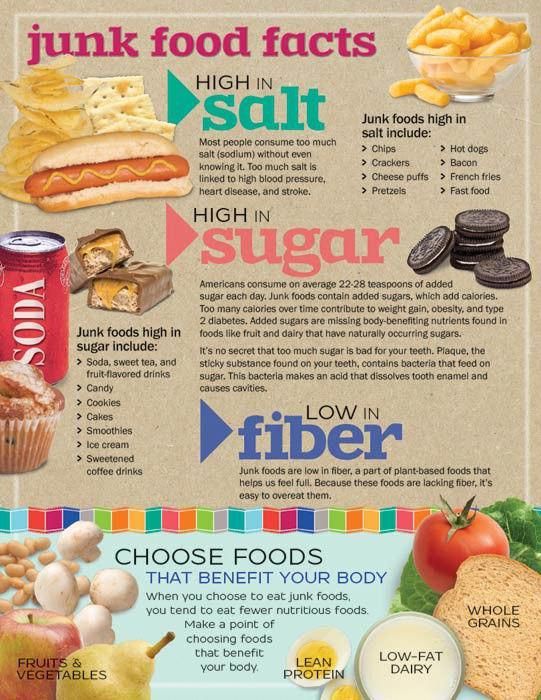 A qualified specialist will determine exactly what it is: lack of milk, lack of complementary foods, excessive nervousness of the mother, or more serious problems. For example, a lag or advance in age development may indicate the beginning of certain deviations. nine0003
A qualified specialist will determine exactly what it is: lack of milk, lack of complementary foods, excessive nervousness of the mother, or more serious problems. For example, a lag or advance in age development may indicate the beginning of certain deviations. nine0003
Read also:
- Comparison table for baby weights
- Child weight and height calculator
- Newborn weight gain, all about baby weight
- How to gain weight for a newborn
Use of site materials without the consent of the author is strictly prohibited. When copying an article, a link to the resource is required.
Height and weight gain for children of the first year of life. Tables
Dear parents, your baby is growing and you are worried about whether he is gaining enough weight and height. For control, there are centile tables for assessing the physical development of children, weight and height indicators. At the same time, you must remember that each baby is individual, he cannot grow according to the textbook. These weight and height recommendations are based on an average number of children and 10% deviation is normal. In addition, the centile corridor from 25% to 75% is an average physical indicator. That is why they say: Physical development is mesosomatic, macrosomatic, microsomatic. nine0003
These weight and height recommendations are based on an average number of children and 10% deviation is normal. In addition, the centile corridor from 25% to 75% is an average physical indicator. That is why they say: Physical development is mesosomatic, macrosomatic, microsomatic. nine0003
It is important that the weight and height indicators are in the same centile corridor, but no more than two adjacent ones. Then we can talk about harmonious development. If the gap is more than two centile corridors, the development is disharmonious. Then we can think either about an unbalanced diet or about a pathology associated with obesity (paratrophy), or protein-energy deficiency (hypotrophy). In addition, one should not forget about the constitutional characteristics of the child, about genetic predisposition. Therefore, in no case should you compare your child with a neighbor's. To talk about the health of a child, we evaluate his condition according to many criteria. This is neuropsychic development, laboratory examination data, anamnesis, heredity. How many times in my practice have I met children who gained 400-450 g in weight every month, by the year they barely gained 7.8-8 kg. But at the same time, children already at 10 months began to walk, pronounce syllables, and follow complex instructions. nine0003
How many times in my practice have I met children who gained 400-450 g in weight every month, by the year they barely gained 7.8-8 kg. But at the same time, children already at 10 months began to walk, pronounce syllables, and follow complex instructions. nine0003
We'll talk about weight and height gain for term babies. In preterm infants, rates of weight gain and height differ according to the degree of prematurity. In addition, children can be born with intrauterine malnutrition.
The tables for girls and boys are different in terms of numerical indicators, but at 1 year of age, these differences are quite minimal.
Centile tables for assessing the physical development of girls from 0 to 12 months. nine0003
| Body length (height), cm. Centiles in % | Age in months | Body weight, kg. Centiles in % | ||||||||||||
| 3 | nine0002 10 | 25 | 50 | 75 | 90 | 97 | 3 nine0003 | 10 | 25 | 50 | 75 | 90 | 97 | |
nine0002 45. 8 8 | 47.5 | 49.8 | 50.7 | 52.0 | 53.1 | 53.9 nine0024 | 0 | 2.6 | 2.8 | 3.0 | 3.3 | 3.7 | 3.9 | 4.1 |
| 48.5 | 50.3 | 52.1 | 53.5 | 55.0 | nine0019 57.3 | 1 | 3.3 | 3.6 | 3.8 | 4.2 nine0003 | 4.5 | 4.7 | 5.1 | |
| 51.2 | 53.3 | 55.2 | nine0019 58.0 | 59.3 | 60.6 | 2 | 3.8 | 4.2 nine0003 | 4.5 | 4.8 | 5.2 | 5.5 | 5.9 | |
| 54.0 | 56.2 | 57.6 | 59.3 | 67.7 | 61.8 | 63.6 | 3 nine0003 | 4.4 | 4.8 | 5.2 | 5.5 | 5.9 | 6.3 | nine0002 6.7 |
| 56.7 | 58.4 | 60.0 | 61.2 | 62.8 | 64.0 nine0003 | 65. | four | 5.0 | 5.4 | 5.8 | 6.2 | nine0002 6.6 | 7.0 | 7.5 |
| 59.1 | 60.8 | 62.0 | 63.8 nine0003 | 65.1 | 66.0 | 68.0 | five | 5.5 | 5.9 | nine0002 6.3 | 6.7 | 7.2 | 7.7 | 8.1 |
| 60.8 | 62.5 nine0003 | 64.1 | 65.5 | 67.1 | 68.8 | 70.0 | 6 | nine0002 5.9 | 6. | 6.8 | 7.3 | 7.8 | 8.3 | 8.7 nine0024 |
| 62.7 | 64.1 | 65.9 | 67.5 | 69.2 | 70.4 | nine0002 71.9 | 7 | 6.4 | 6.8 | 7.3 | 7.7 | 8.4 | nine0019 9.3 | |
| 64.5 | 66.0 | 67.5 | 69.0 | 70.5 nine0003 | 72.5 | 73.7 | 8 | 6.7 | 7.2 | 7.6 | nine0002 8.2 | 8. | 9.3 | 9.7 |
| 66.0 | 67.5 | 69.1 nine0003 | 70.2 | 72.0 | 74.1 | 75.5 | nine | 7.1 | nine0002 7.5 | 8.0 | 8.6 | 9.2 | 9.7 | 10.1 |
| 67.5 nine0003 | 69.0 | 70.3 | 71.9 | 73.2 | 75.3 | 76.8 | nine0002 10 | 7.4 | 7.9 | 8.4 | 9.0 | 9.6 | 10.1 nine0024 | 10.5 |
| 68. | 70.1 | 71.5 | 73.0 | 74.7 | nine0002 76.5 | 78.1 | eleven | 7.7 | 8.3 | 8.7 | 9.3 nine0024 | 9.9 | 10.5 | 10.9 |
| 70.1 | 71.4 | 72.8 | nine0002 74.1 | 75.8 | 78.0 | 79.6 | 12 | 8.0 | 8.5 nine0024 | 9.0 | 9.6 | 10.2 | 10.8 | 11.3 |
At the same time, until the age of three months, the child adds 20-30 grams per day daily, respectively, from 140 to 200 per week. If we talk about the average weight gain by months, then it is only 600 g per month, since the child after birth has physiological weight loss (with urine, feces, transition from intrauterine feeding to breastfeeding during the adaptation period), approximately 10% of the weight, which is 200-300 grams. nine0003
If we talk about the average weight gain by months, then it is only 600 g per month, since the child after birth has physiological weight loss (with urine, feces, transition from intrauterine feeding to breastfeeding during the adaptation period), approximately 10% of the weight, which is 200-300 grams. nine0003
More often, by 3-4 days, the child restores its original weight, and then there is an increase. But I had a case in practice when the child began to gain weight from the 20th day of life, while the girl was active, reflexes were alive, her appetite was good, she could withstand the night interval, stool 4-5 times a day, urination was sufficient, developed according to age. Therefore, do not worry. Our indicator is the well-being of the child. If the baby is active, eats with appetite, sleep is calm, the skin is clean, physiological functions are not disturbed, be calm, your baby is healthy and not hungry. You see from the table the range of weight per year is from 8 to 13 kg. This is the norm. There is no reason to run to the endocrinologist, genetics, to examine the child. nine0003
This is the norm. There is no reason to run to the endocrinologist, genetics, to examine the child. nine0003
Or the opposite situation: in the first months of life, a child gains 1-1.5 kg while breastfeeding. If the baby does not have colic, he does not spit up, there are no gastrointestinal manifestations, he is active, the skin is clean, physiological functions are not disturbed - this is also the norm. Remember, as often happens, premature babies quickly gain weight and catch up with their peers by the year. And large babies gain weight more slowly. In my entire thirty-year practice, only two children weighed 14-15 kg by the year, although their parents were large and tall. By the age of three, they weighed almost the same, added only in height, the rest of their peers caught up with them. nine0003
| Month | Weight gain in grams |
| 1 | 600.0 |
| 2 | 800. |
| 3 | 800.0 |
| four | 750.0 |
| five | 700.0 nine0024 |
| 6 | 650.0 |
| 7 | 600.0 |
| 8 | 550.0 | nine0045
| nine | 500.0 |
| 10 | 450.0 |
| eleven | 400.0 |
| 12 | 350.0 |
It is believed that by 4-4.5 months the child should double the weight, and triple by the end of the year.
It happens that the increase in height and weight goes in leaps, seasonality, unevenness, and sometimes asymmetry of growth are noted. Pediatricians are concerned about the circumference of the head and chest, by 2-3 months they should be equal. Further, the breast grows faster. This is important so as not to miss the pathology. nine0003
Pediatricians are concerned about the circumference of the head and chest, by 2-3 months they should be equal. Further, the breast grows faster. This is important so as not to miss the pathology. nine0003
The younger the child, the faster his growth. In the first 3 months of life, body length increases by 3 cm monthly, in the second quarter by 2.5-2 cm monthly. In the third - 1.5-2 cm, in the fourth - 1 cm monthly. The total increase in height in the first year of life is about 25 cm.
Centile tables for assessing the physical development of boys from 0 to 12 months.
| Body length (height), cm. nine0003 Centiles in % | Age in months | Body weight, kg Centiles in % | ||||||||||||
| 3 | 10 | 25 nine0003 | 50 | 75 | 90 | 97 | 3 | 10 nine0024 | 25 | 50 | 75 | 90 | 97 | |
| 46. | 48.0 nine0003 | 49.8 | 51.3 | 52.3 | 53.5 | 55.0 | 0 | nine0002 2.7 | 2.9 | 3.1 | 3.4 | 3.7 | 3.9 | 4.4 nine0024 |
| 49.5 | 51.2 | 52.7 | 54.5 | 55.6 | 56.5 | nine0002 57.3 | 1 | 3.3 | 3.6 | 4.0 | 4.3 | 4.7 | nine0019 5.4 | |
| 53.6 | 53.8 | 55.3 | 57. | 58.2 nine0003 | 59.4 | 60.9 | 2 | 3.9 | 4.2 | 4.6 | nine0002 5.1 | 5.6 | 6.0 | 6.4 |
| 55.3 | 56.5 | 58.1 nine0003 | 60.0 | 60.9 | 62.0 | 63.8 | 3 | 4.5 | nine0002 4.9 | 5.3 | 5.8 | 6.4 | 7.0 | 7.3 |
| 57.5 nine0024 | 58.7 | 60.6 | 62.0 | 63.1 | 64.5 | 66. | four nine0003 | 5.1 | 5.5 | 6.0 | 6.5 | 7.2 | 7.6 | nine0002 8.1 |
| 59.9 | 61.1 | 62.3 | 64.3 | 65.6 | 67.0 nine0003 | 68.9 | five | 5.6 | 6.1 | 6.5 | 7.1 | nine0002 7.8 | 8.3 | 8.8 |
| 61.7 | 63.0 | 64.8 | 66.1 nine0003 | 67.7 | 69.0 | 71.2 | 6 | 6.1 | 6. | nine0002 7.1 | 7.6 | 8.4 | 9.0 | 9.4 |
| 63.8 | 65.1 nine0003 | 66.3 | 68.0 | 69.8 | 71.1 | 73.5 | 7 | nine0002 6.6 | 7.1 | 7.6 | 8.2 | 8.9 | 9.5 | 9.9 nine0024 |
| 65.5 | 66.8 | 68.1 | 70.0 | 71.3 | 73.1 | nine0002 75.3 | 8 | 7.1 | 7.5 | 8.0 | 8.6 | 9. | nine0019 10.5 | |
| 67.3 | 68.2 | 69.8 | 71.3 | 73.2 nine0003 | 75.1 | 75.5 | nine | 7.5 | 7.9 | 8.4 | nine0002 9.1 | 9.8 | 10.5 | 11.0 |
| 68.8 | 69.1 | 71.2 nine0003 | 73.0 | 75.1 | 76.9 | 78.8 | 10 | 7.9 | nine0002 8.3 | 8.8 | 9.5 | 10.3 | 10.9 | 11.4 |
| 70. | ||||||||||||||


 .. 1200
.. 1200  .. 600
.. 600  .. 5100
.. 5100 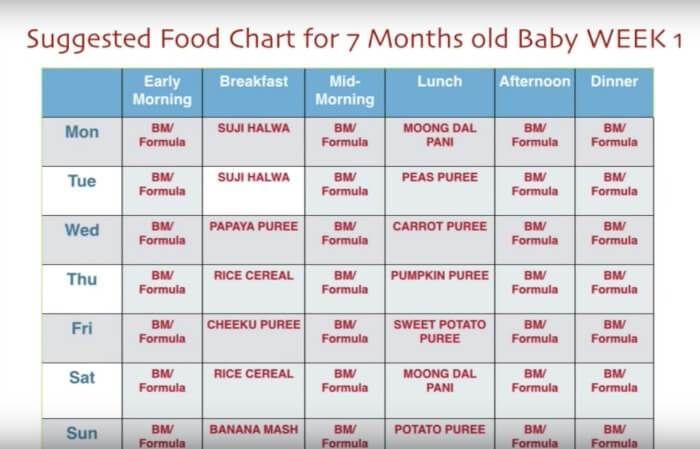 .. 10200
.. 10200  .. 604
.. 604  .. 696
.. 696 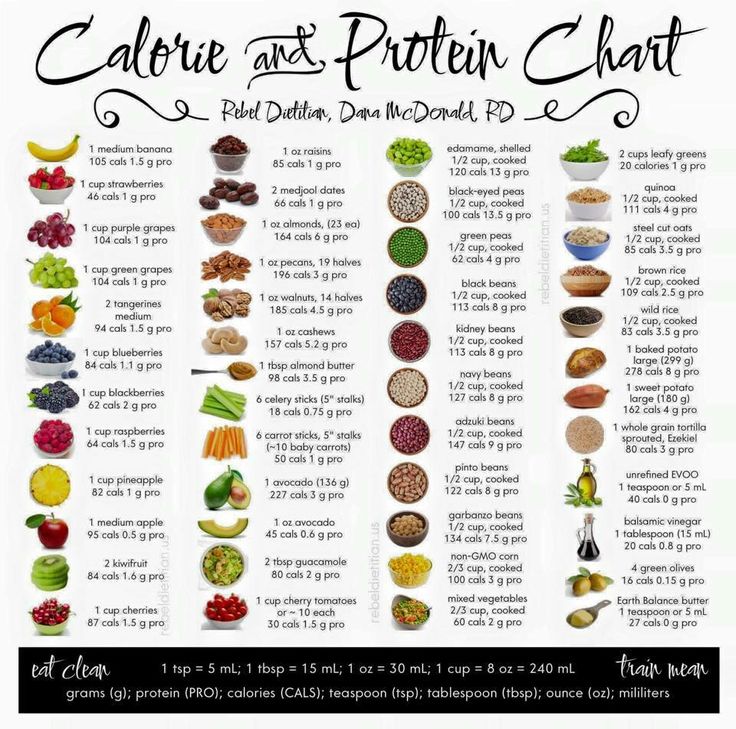 .. 1161
.. 1161 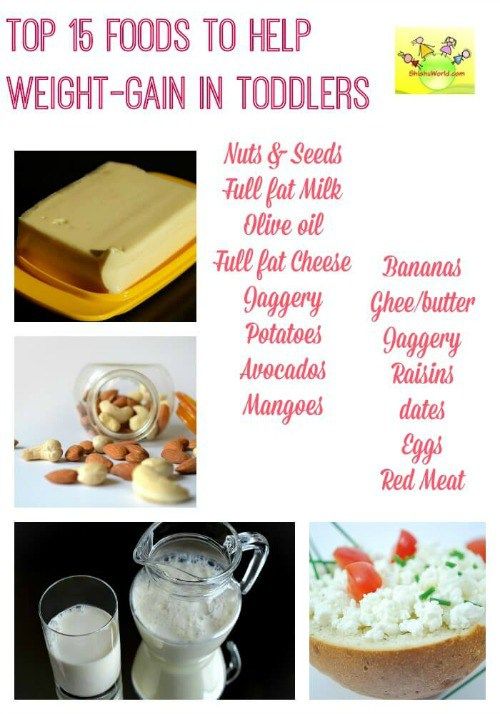 .. 33
.. 33  .. 65
.. 65  8
8  7
7  3
3  8
8  9
9 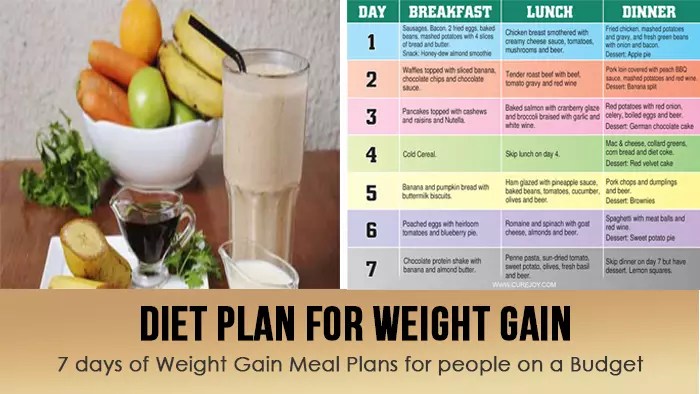 0 nine0003
0 nine0003  5
5  3
3  3
3  6
6  4
4 








